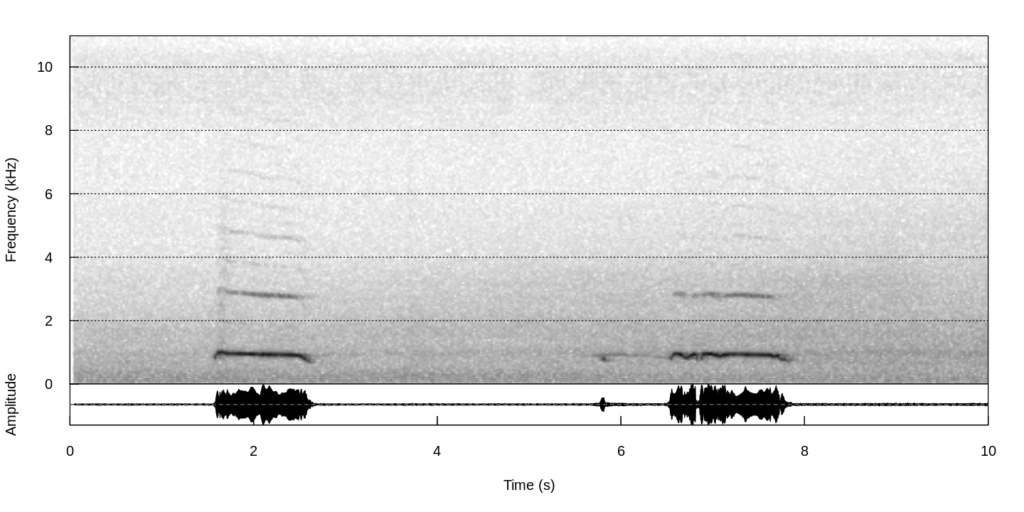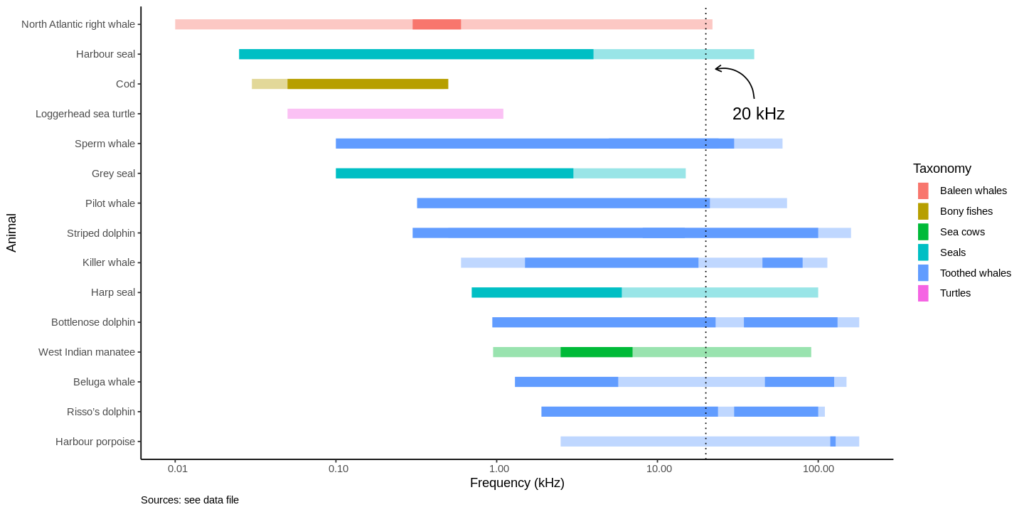Conference: Symposium “Hörvermögen von Pinguinen / Hearing in Penguins”, 153. Jahresversammlung der Deutschen Ornithologen-Gesellschaft, 19. und 20. September 2020. Full presentation DOI: 10.13140/RG.2.2.33907.14883
Spectrograms
Spectrograms are a common visualization of sound data. Visualizing sound data can be useful when doing a presentation or for publication. Additionally, machine learning algorithms for classifying sound data generally use spectrograms as their starting point, instead of the sound data itself, as many advanced algorithnms for classifying images are readily available. The example uses the R packages warbleR (Araya-Salas & Smith-Vidaurre, 2017), seewave (Sueur, Aubin, Simonis, 2008) and tuneR (Ligges et al., 2018).
This example draws the spectrogram of the call of a tawny owl (Strix aluco).

Hearing and vocalization ranges of marine animals
For a project on noise pollution in the oceans at the Natural History Museum in Berlin, I recently made this plot of the hearing and vocalization ranges of selected marine animals. Range plots are generally not-so-common plots. In this example, I plotted the hearing and vocalization range (frequency) for several species of whales, dolphins, seals, turtles and fishes.
